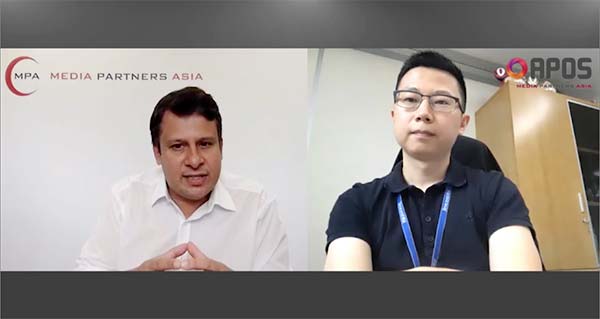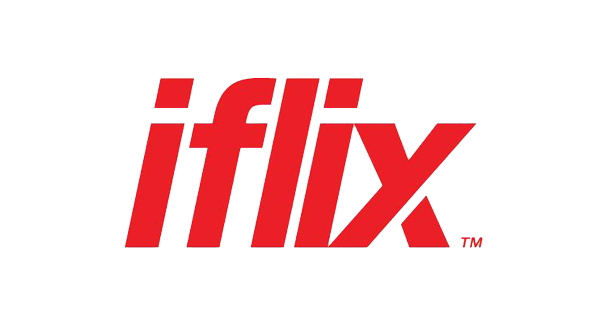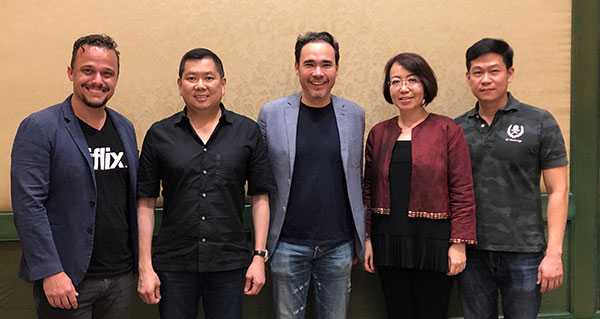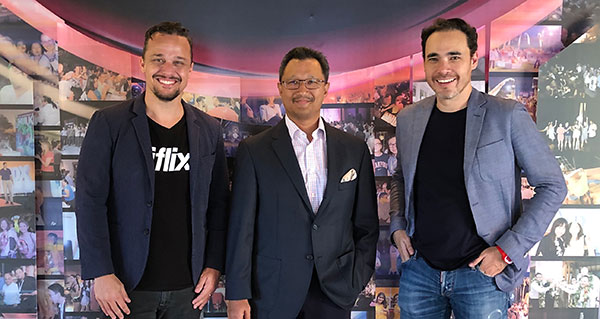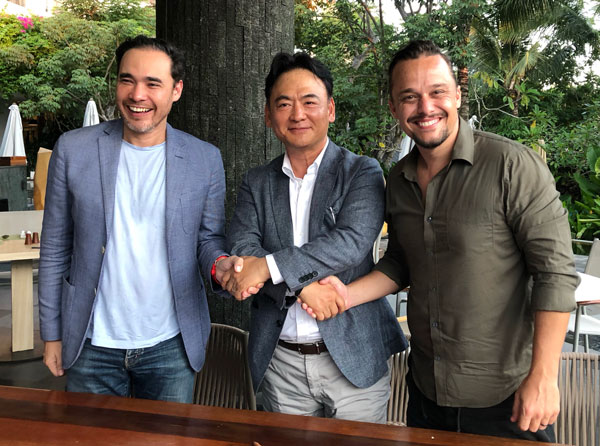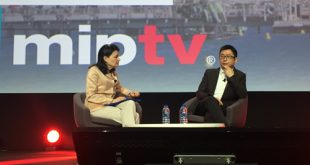Mark Britt, co-founder and CEO of iflix, talks to World Screen Newsflash about changing course at the platform, using data and building scalable businesses in markets where incomes are low and tech obstacles still exist.
In 2015, iflix went live in Asia with an SVOD service delivering a heavy dose of Hollywood content. Today, the platform has a radically different proposition, having doubled down on local content, added an ad-supported tier and expanded its offering with live channels.
TV ASIA: You’ve done several programming and strategic investment deals this year as you’ve pivoted toward more local content. What was the impetus behind that move?
BRITT: In the media business, people talk about change and evolution as if it’s a bad thing. As though it’s some form of failure. In the technology business, it’s not. The iterative process of change is a positive step. You start by saying, We don’t know what the customer wants in the future. We don’t know what the future of TV will look like, but we’re going to evolve our business every single day in response to data. We’re going to follow that data to the point when we’re meeting our customers’ needs better. There have been two big shifts in our business, both driven by data. One has been around solving the payments problem in emerging markets. And in the short term, you can’t. The infrastructure challenges, the customers’ cash-flow issues and the challenges in the mobile telco billing system create such friction for customers that it makes getting premium entertainment a tough experience. We’ve worked to address that. We’re getting better. We have about a million directly paying customers. It’s been four hard years to get there. Churn levels are high because people have cash-flow issues. So the first big pivot was, if we want to entertain as many people as possible, we have to go free. We did that in the middle of last year, and it’s had a hugely positive impact.
The second major theme, driven by data, is we realized that there are 300,000 or 400,000 people in these countries that care about Western content, but there are 40 million to 60 million in the mass market who want better local content. So we’ve shifted our budgets from roughly 80 percent Western, some regional and about 10 percent local to 80 percent local. That’s all driven by data. Local content owners care passionately about their local audience. So the rules around windowing, distribution and promotion of content are driven by local market factors. When you’re working with large Western studios, they tend to be very passionate about their global policies, which are informed by market conditions in the U.S. and U.K. The major strategic deals we’ve made have been towards that end, really establishing iflix as a fixture in the local content ecosystem in all our key markets.
TV ASIA: Where are you seeing the biggest successes in the local content space? Series, movies, entertainment?
BRITT: We love taking local movies, pretty much straight out of the box office. If they do well, we then commission a TV series from that movie. It’s the same cast, the same crew, the same director. You’re getting movie-quality development into TV series for the first time in a lot of these countries. About 30 percent of the Indonesian box office is on iflix exclusively, within 90 to 100 days. We also do a lot of live sports. We streamed over 1,500 games last year; 221 live football matches were exclusive to us in Malaysia. We’re the ten-year owner of the Malaysian football rights in a joint venture with the league.
TV ASIA: For series, do you drop all episodes at once?
BRITT: We do. There’s what we call a “decay curve” for completion rates of series. The other index that we look at is what we call “binge-watching intensity”—the number of hours that passes between episode consumption. The longer you stretch out the distribution of series, the lower the completion rate, and then the lower the binge-watching intensity later. So we don’t put any rules around it, we let them go for it.
TV ASIA: What have been some of the key lessons learned from your original content investments?
BRITT: We give the people we work with an enormous amount of creative freedom. There are no constraints on episode lengths or number of episodes. We don’t dictate the format. We try to let them push the boundaries as much as possible. We’re entering an interesting discussion, as an industry, around appropriate censorship levels. There’s an odd dichotomy in many of these markets. The content on free to air, because it’s mass market, is very safe, to the point of being mundane or generic. And on the flip side, young kids are mostly pirating content that is deeply offensive to many local religious standards. The most successful show we’ve done is Nur. It’s about a religious leader in a mosque who falls in love with a prostitute. There’s no sex or nudity, because there doesn’t need to be. But it’s a show that pushes the boundaries in a very local way and is very sensitive to local community standards.
TV ASIA: How has the response been to your ad offerings?
BRITT: The free-to-air ad market in Southeast Asia is $4.5 billion a year. No one can remember a time that they rushed home to catch the [live broadcast] of their favorite show, and at the same time, free-to-air advertising is still going up. It’s because the digital market is not yet there to move the ad dollars to. The wonderful thing about moving iflix to advertising is brands have genuinely welcomed us because they have been looking for a vehicle to advertise in digital. They don’t believe YouTube or Facebook is a great destination for their brands. There are two conversations we’re having with advertisers now. One is, You’re a TV advertiser, how do you extend your TV campaign into the digital context? We’ve done the data work with Nielsen where for a client like Unilever, we can match their internal proprietary targeted audience segments. What is the audience for Dove? How do I buy that same targeted audience using the same data on iflix? The other is, it’s like YouTube, but it’s good!
TV ASIA: How have you designed the user interface to promote discovery and encourage watch time?
BRITT: The media business is a fragmented landscape that is fragmenting more and more every single day. Emerging markets skew young demographically. About 68 percent of Southeast Asia is under the age of 30. These are young people with short attention spans and many options. There are two strategies for that. One is, you have to raise the bar. And instead of putting rules around how people will consume things, you need to delight them. If they love you, they come back; if they don’t, they don’t. All the traditional rules of pay TV around contracts and channels and ecosystems are dead. Customers are in complete control. So you just have to do a wonderful job. The second thing is that many aspects of engagement, personalization, push notifications, reminders, are technology-led questions. We have just over 200 full-time engineers; we’ve been building our technology on this for the last five years. About 80 percent of our consumption comes from personalized recommendations. When we do a good job of algorithmically servicing a great show for you, you watch it. If we mess it up, you switch off the platform.
The interesting challenge that many media businesses are finding, as the new landscape evolves, is the basis of competition has shifted. It used to be, create great content, lock up deep monopoly platforms and get steady cash flow. Now you’re creating controversial content, building a complex technology platform, acquiring users with a direct retail brand and then facing the pressures every day of needing to maintain and capture their attention by delighting them. That’s a very different business. It’s tough, but incredibly rewarding when you get it right.
TV ASIA: Tell us about managing the complexities of telco partnerships.
BRITT: Telcos are a critical part of delivering video in an ecosystem that still has very significant structural challenges. We host our content within the environments of over 20 telcos in Southeast Asia. When you only have a 300 kb connection, iflix works. So we’re solving fundamental structural issues in terms of how the internet works [in emerging markets]. And on the commercial level, 85 percent of customers don’t have access to WiFi. They are in a mobile-data-led environment. If you don’t manage that well, the cost of mobile data to the user dwarfs anything else in the process. If you manage that well and you can bundle great content with mobile data and remove the fear for the customer on how they get charged, then consumption goes through the roof. The average iflix customer doesn’t have mobile data every day, and 98 percent are on a prepaid telco bundle. The average iflix customer will only have mobile data four to five times a week. On the days they have mobile data, if we can bundle iflix with it, they’ll consume an average of 1.5 hours a day. When we don’t do that effectively and they are fearful of mobile data charges, they’ll consume 25 to 30 minutes.
TV ASIA: What market forces do you see impacting your business in the next six months?
BRITT: At a structural level, five years ago, the main questions we were asked and that we had for ourselves were, Is there going to be an iflix? Do people watch TV on mobile? Is pay TV going to get to scale? Is an independent, disruptive business focused on digital going to be successful? Those aren’t the questions now. OTT has won, linear TV is dying and it will continue to die. Pay TV is not going to get to scale. Now the question is, Who’s going to win? Now that we’ve proven the market, there will be new entrants. Most have big balance sheets. We’re heading into a terrible economic climate. This is a business that requires significant capital and really big, brave bets on building the next generation of media businesses. There are 600 million people in Southeast Asia with a mobile phone and a mobile broadband connection. So whoever wins is going to have a multi-billion-dollar business. But it will require significant investment over the next few years to get there. That’s at the macro level. At the content level, it’s all about local. We’ll do about 90 local original productions this year. I think 30 will go well, 30 are interesting, 30 are crazy bets! The industry is in a learning phase. The culture becomes, How do you learn and evolve as markets change? As customer expectations change, how do you continue to iterate?
 TVASIA
TVASIA
